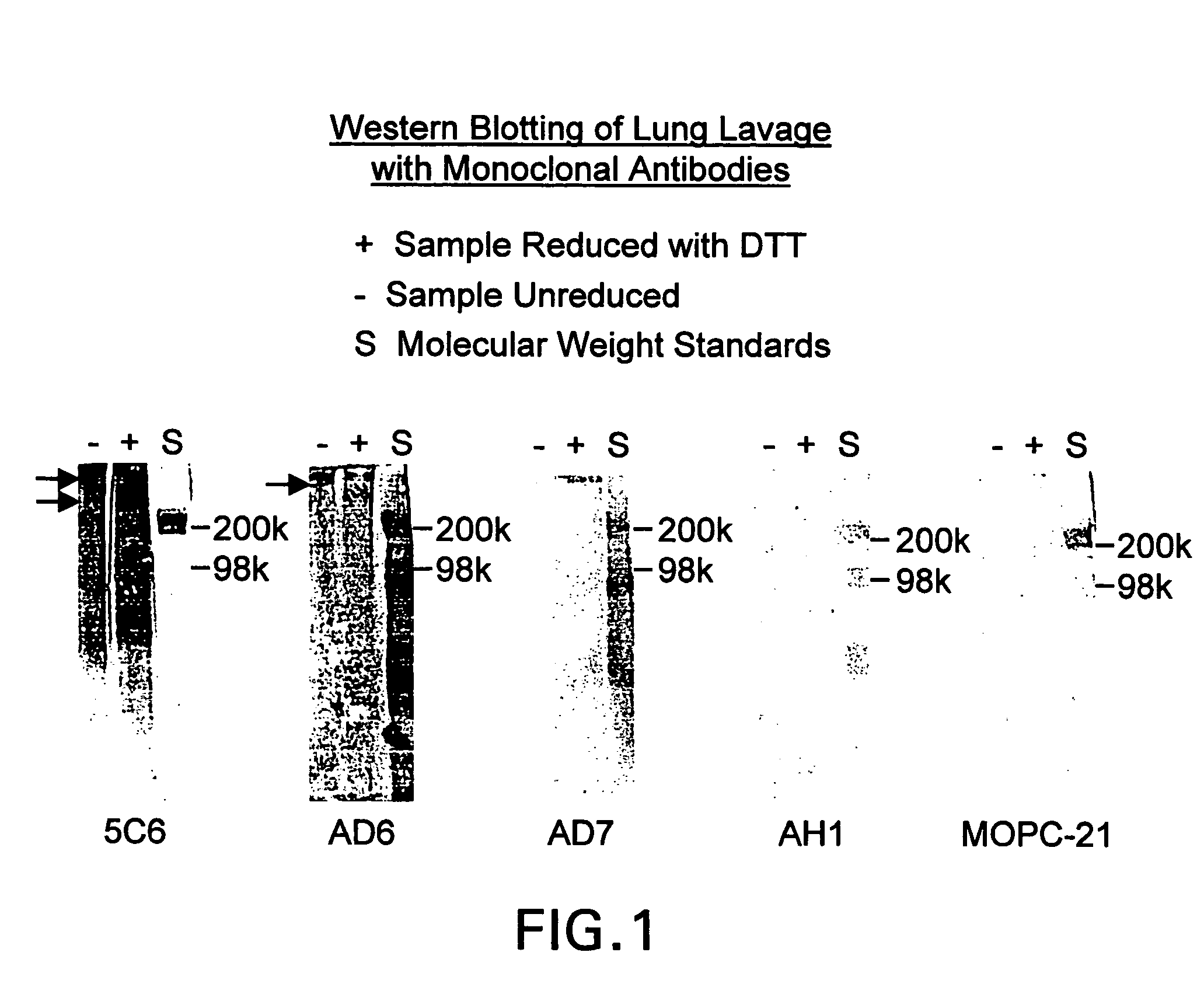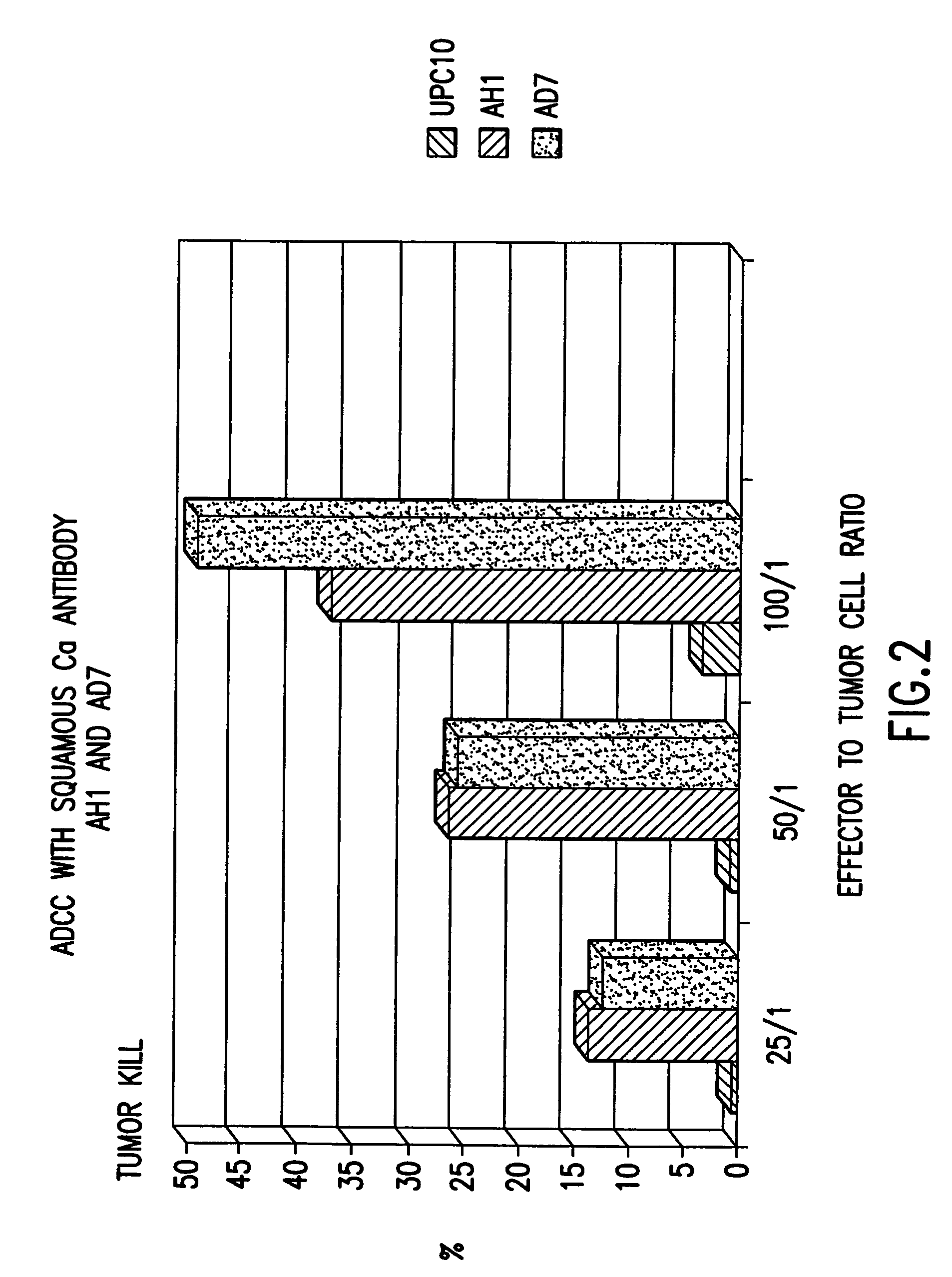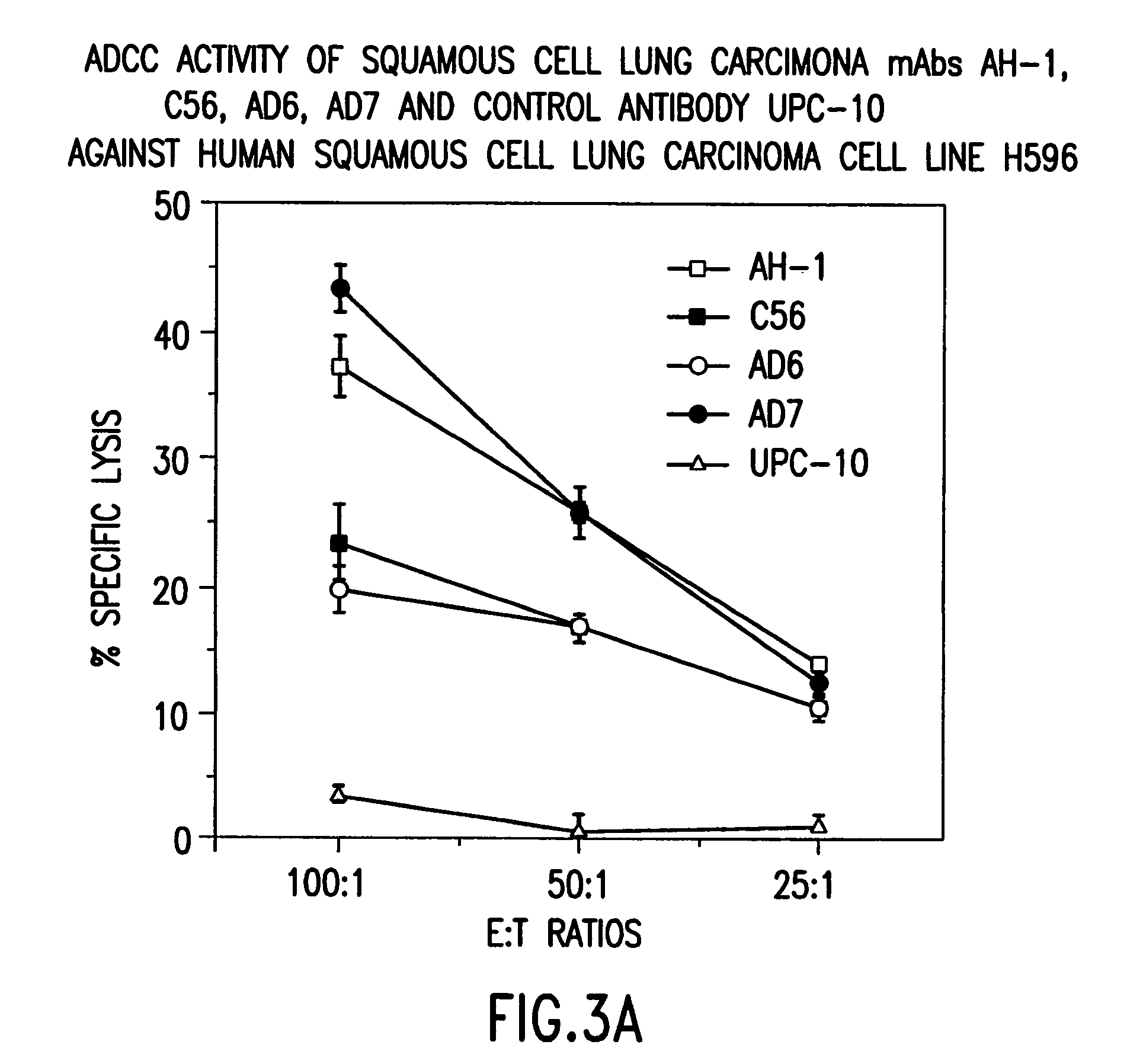Identification and development of specific monoclonal antibodies to squamous cell carcinoma
a technology of squamous cell carcinoma and specific monoclonal antibodies, which is applied in the field of identification and development of specific monoclonal antibodies to squamous cell carcinoma, can solve the problems of poor overall prognosis, poor survival rate of five years, and ineffective intensive monitoring in reducing the incidence of the disease or its outcom
- Summary
- Abstract
- Description
- Claims
- Application Information
AI Technical Summary
Problems solved by technology
Method used
Image
Examples
Embodiment Construction
[0023]The present invention relates to novel monoclonal antibodies that are highly specific for squamous cell carcinomas. More specifically, the antibodies react with squamous cell carcinoma of the lung and cervix, while showing none or limited reactivity with normal tissue. Such antibodies include those designated AD6, 5C6, AD7, and AH1. All four antibodies were reactive to lung cancer antigen and to human lung cancer cell lines when assayed using ELIZA and immunofluorescent assays. In addition, the antibodies exhibit strong ADCC and immunohistochemical activity.
[0024]5.1 Squamous Cell Carcinoma Specific Antibodies
[0025]The present invention relates to novel antibodies that are highly specific for squamous cell carcinoma cells of the lung and cervix while showing none or limited reactivity with normal human tissue. The novel antibodies of the invention are designated AD6, 5C6, AD7, and AH1. The designated antibodies can be used to isolate and characterize the antigen to which they ...
PUM
| Property | Measurement | Unit |
|---|---|---|
| concentration | aaaaa | aaaaa |
| capacitance | aaaaa | aaaaa |
| concentration | aaaaa | aaaaa |
Abstract
Description
Claims
Application Information
 Login to View More
Login to View More - R&D
- Intellectual Property
- Life Sciences
- Materials
- Tech Scout
- Unparalleled Data Quality
- Higher Quality Content
- 60% Fewer Hallucinations
Browse by: Latest US Patents, China's latest patents, Technical Efficacy Thesaurus, Application Domain, Technology Topic, Popular Technical Reports.
© 2025 PatSnap. All rights reserved.Legal|Privacy policy|Modern Slavery Act Transparency Statement|Sitemap|About US| Contact US: help@patsnap.com



